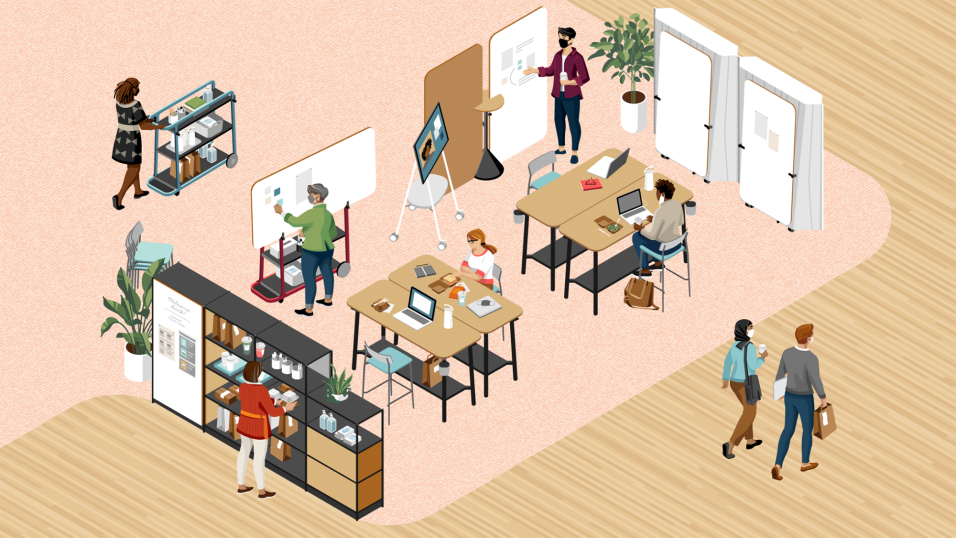Kickstart Your Return to the Office
13.05.2021Company: Steelcase Czech Republic s.r.o
Create the buzz people missed with new ideas for high energy collaboration and social spaces
Whether you like working from home or not, everyone has experienced the feeling of isolation during the pandemic. People also struggled to collaborate while apart. The shift to remote work caused millions of workers to suffer from loneliness and isolation and it’s had a negative impact on their engagement, productivity and wellbeing.
Many people can’t wait to return to the office and work side-by-side with their colleagues again and organizations are taking every precaution to make sure workplaces are safe when people do come back. But what if these precautionary measures make the office feel sad and even more isolating than working from home?
“We experienced this ourselves,” says Gale Moutrey, vice president of Workplace Innovation + Brand Management, Steelcase. “When some people returned last summer, we retrofitted our workplace with diverse safety measures and implemented new protocols for safe behaviors. But the effect ended up feeling stressful for some people and some spaces looked a little sad because of distancing measures, rather than feeling the buzz or energy we were used to. Gradually, we saw a number of people — who really wanted to be there — retreat and work at home.”
“We are looking at space very differently. It will be a really great harmony between space, food and technology — a seamless and frictionless experience for people.”
ANTHONY GARGIULO Senior Vice President, Compass Group

A First Step: Create a Social Hub
Over 50% of companies plan to pilot new spaces as part of their return to the office this year, and a company’s cafe is a good space to start experimenting. These spaces often sit empty parts of the day because they are typically used just for dining, individual work or small meetings. By looking at underutilized spaces in new ways, cafes can be redesigned as social hubs that will inspire people and provide high-performing settings where they can reconnect with their colleagues, as well as collaborate effectively.
Steelcase is currently experimenting with its WorkCafé at the Learning and Innovation Center (LINC) in Grand Rapids, Michigan. Using flexible furniture elements, and without making any expensive architectural changes, the new spaces can be quickly implemented and assets can be easily redeployed. It’s a low risk, high gain experiment, says Moutrey.
The redesigned space builds an infrastructure for cultivating a sense of community that has been difficult to create while people have been exclusively remote. A range of flexible settings with different privacy levels turns the space into a vibrant hub where different modes of work can happen simultaneously – collaboration, informal social interactions, learning and even focus work. The addition of open collaboration settings allow people to safely and comfortably connect while moving around easily. Tools such as accessible power, mobile whiteboards and digital collaboration devices make the spaces high-performing with a social, informal vibe. Employee feedback will be collected for ongoing testing and iteration.
More information here.
Tags: Real Estate | Human Resources |








